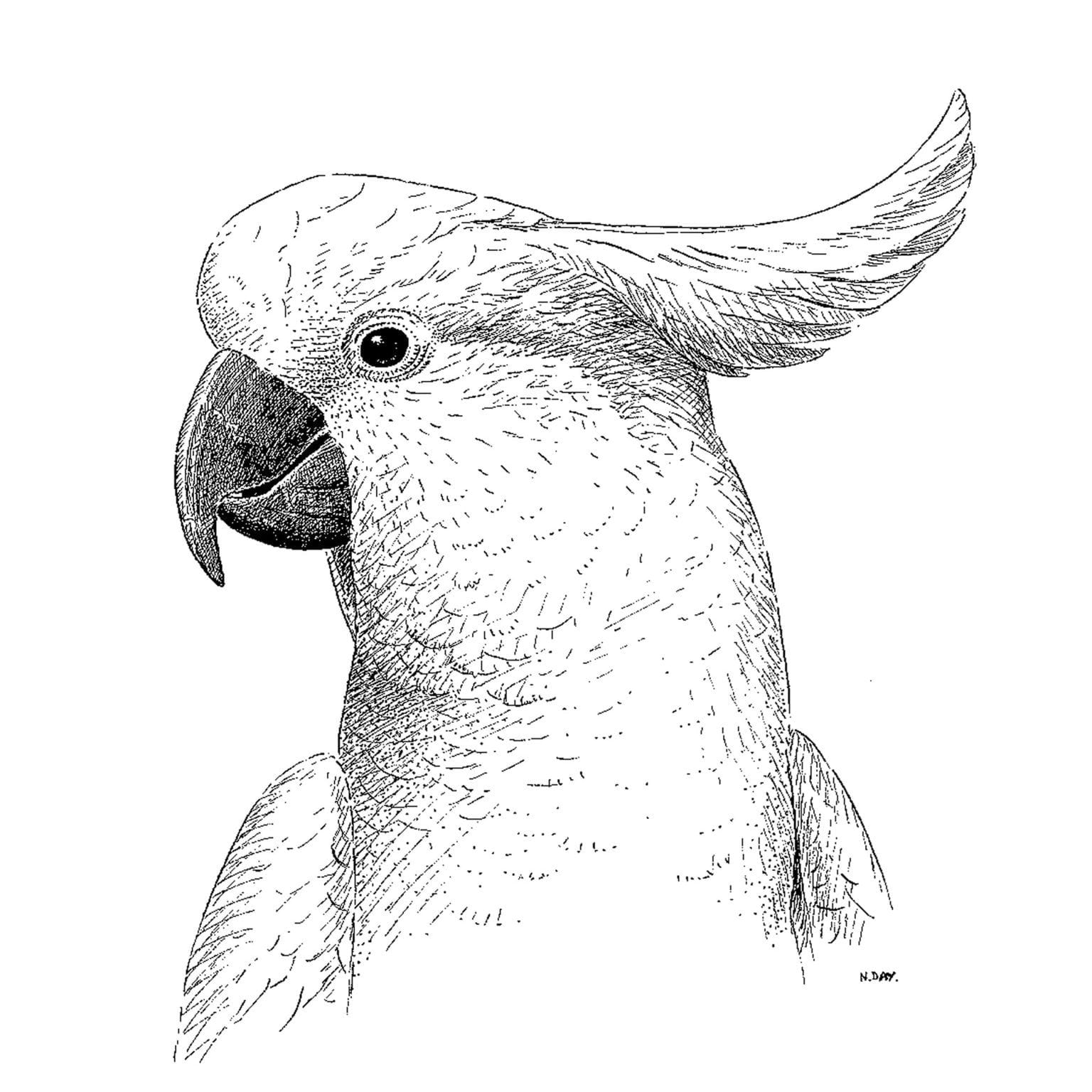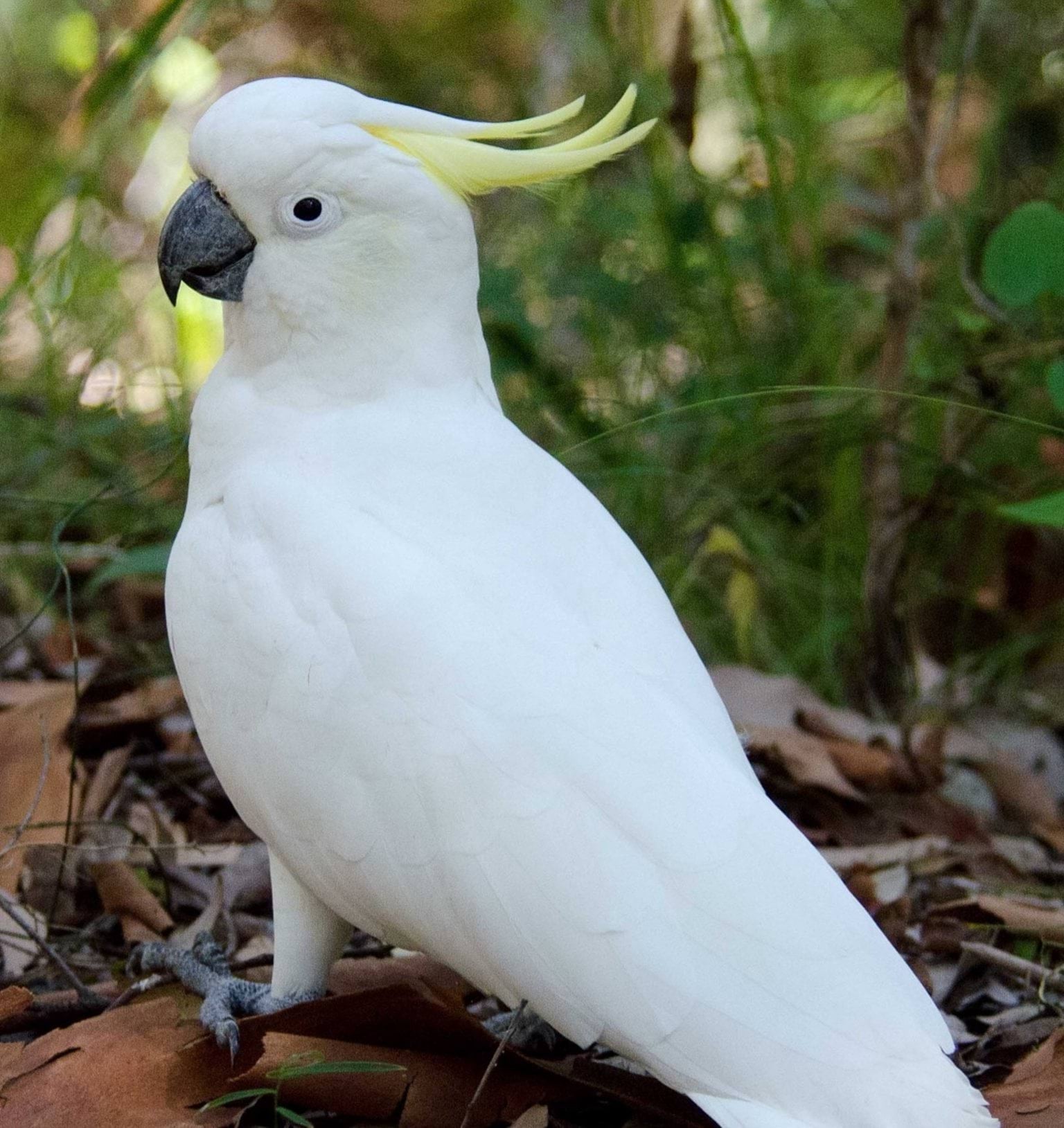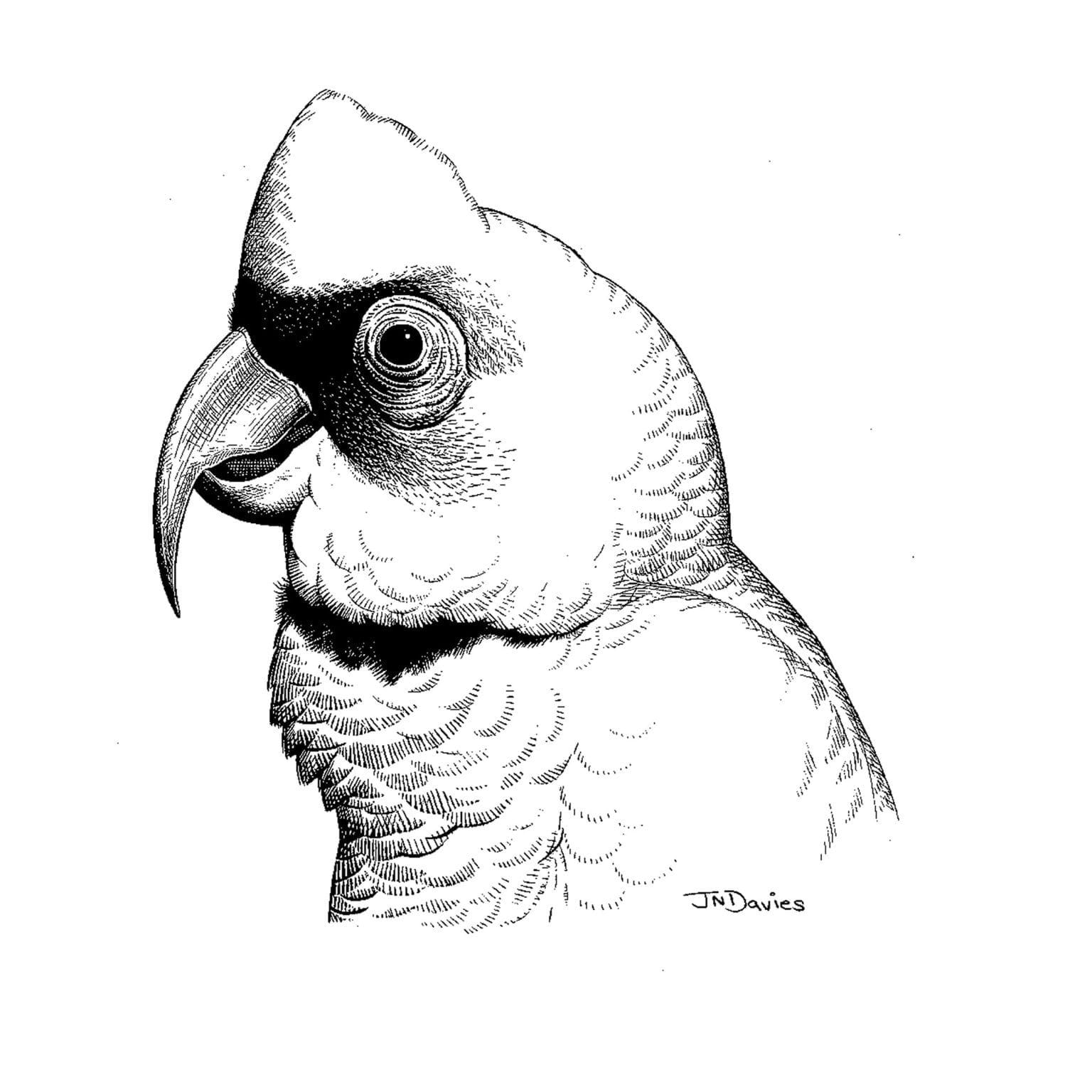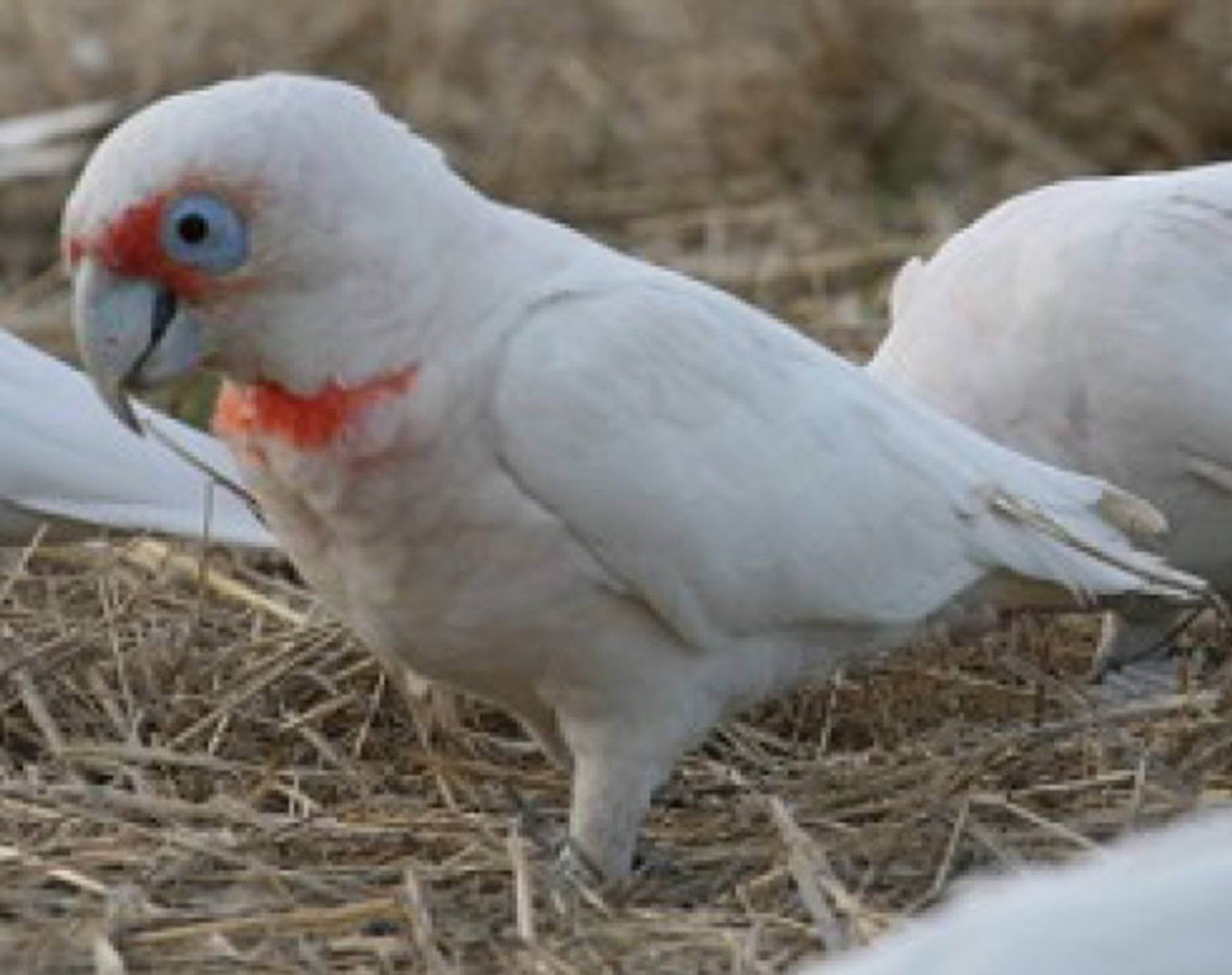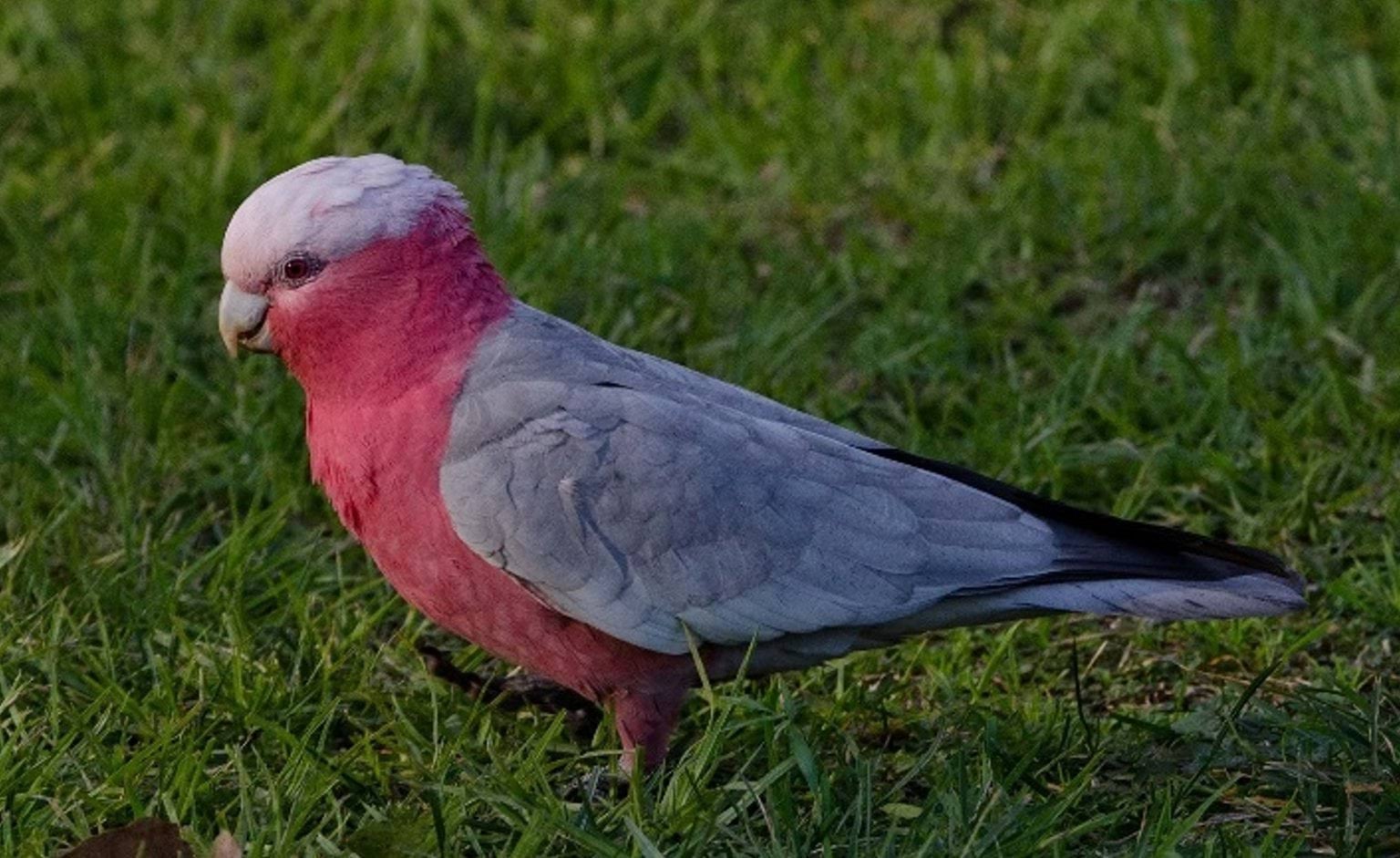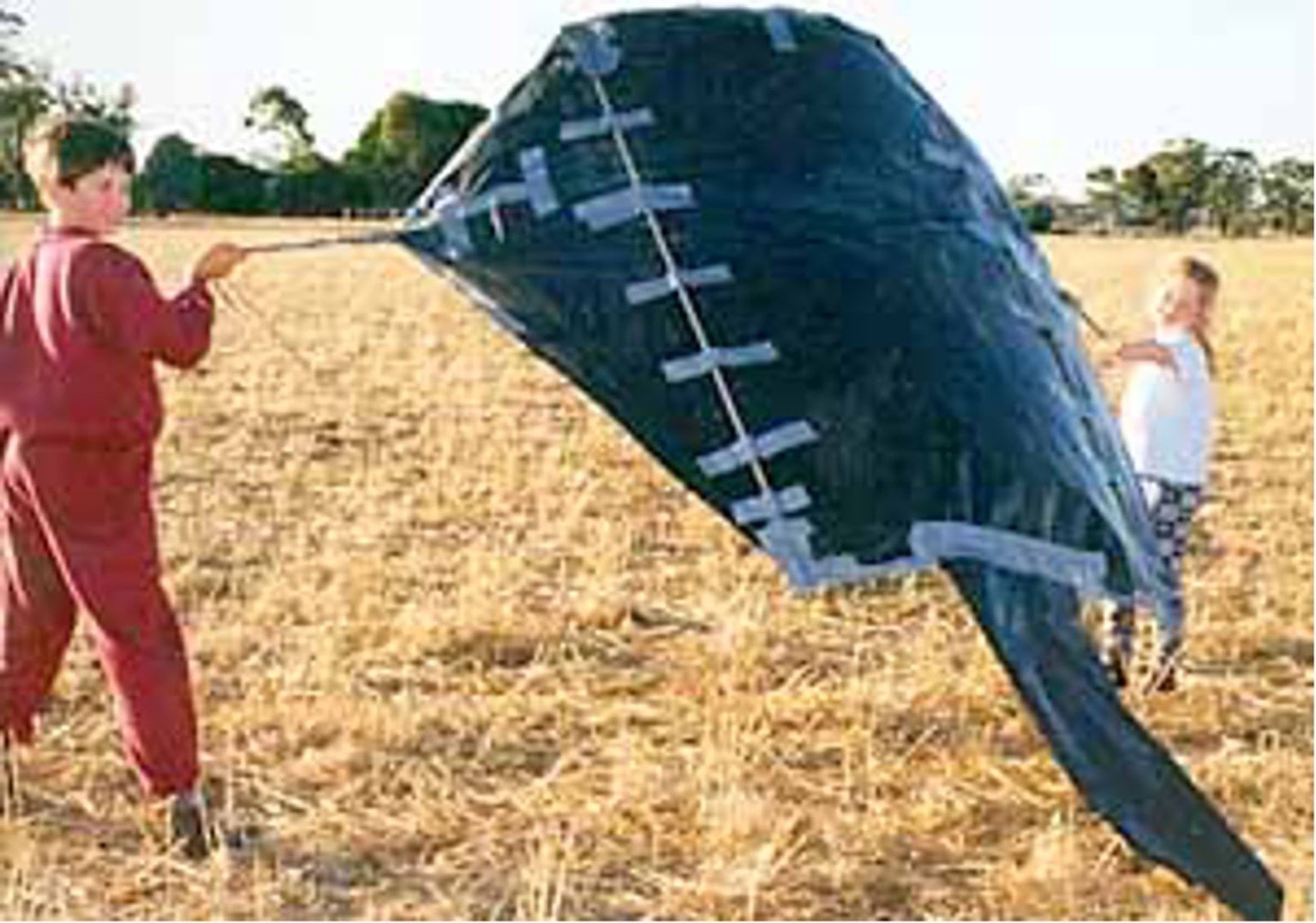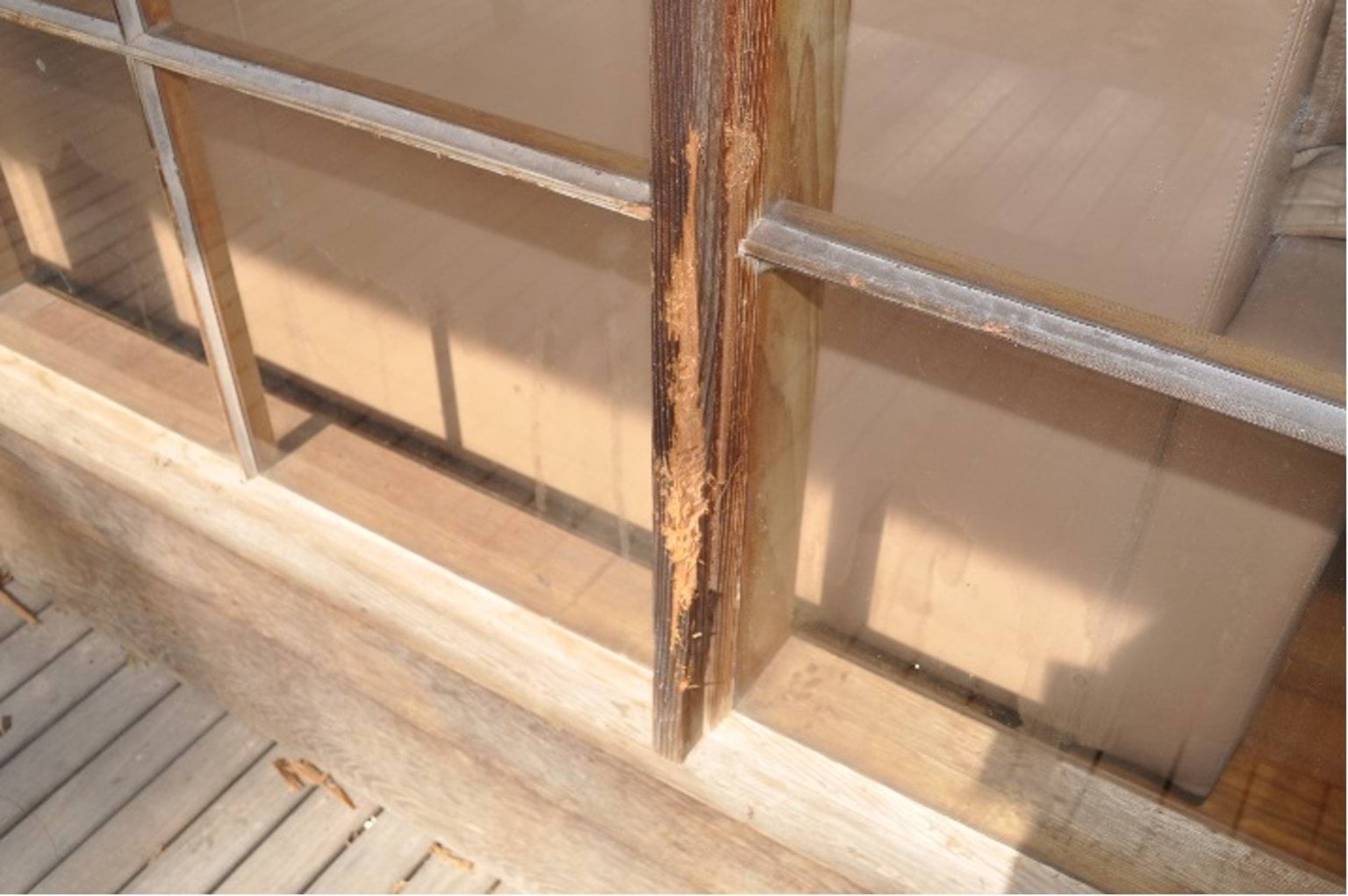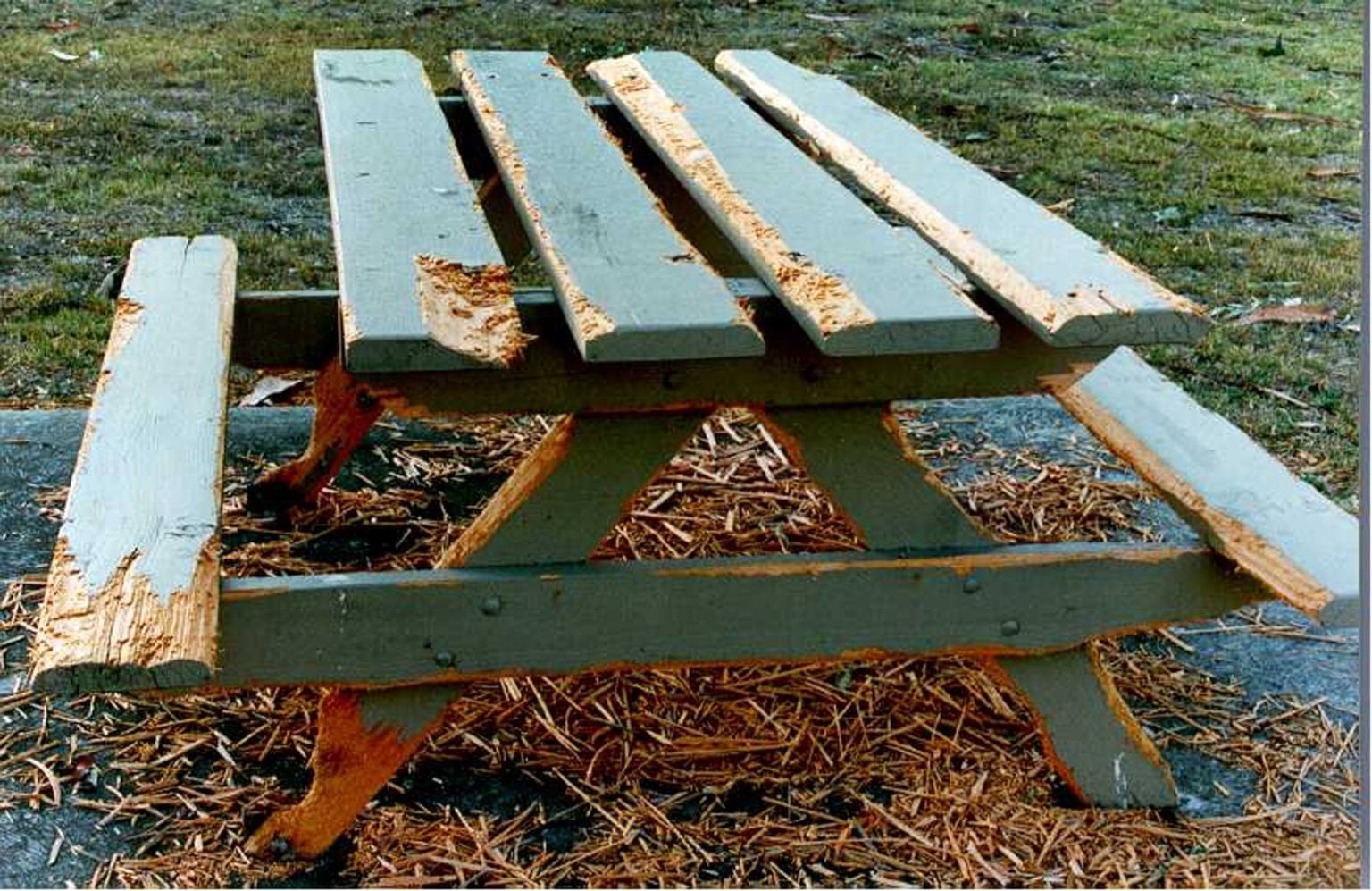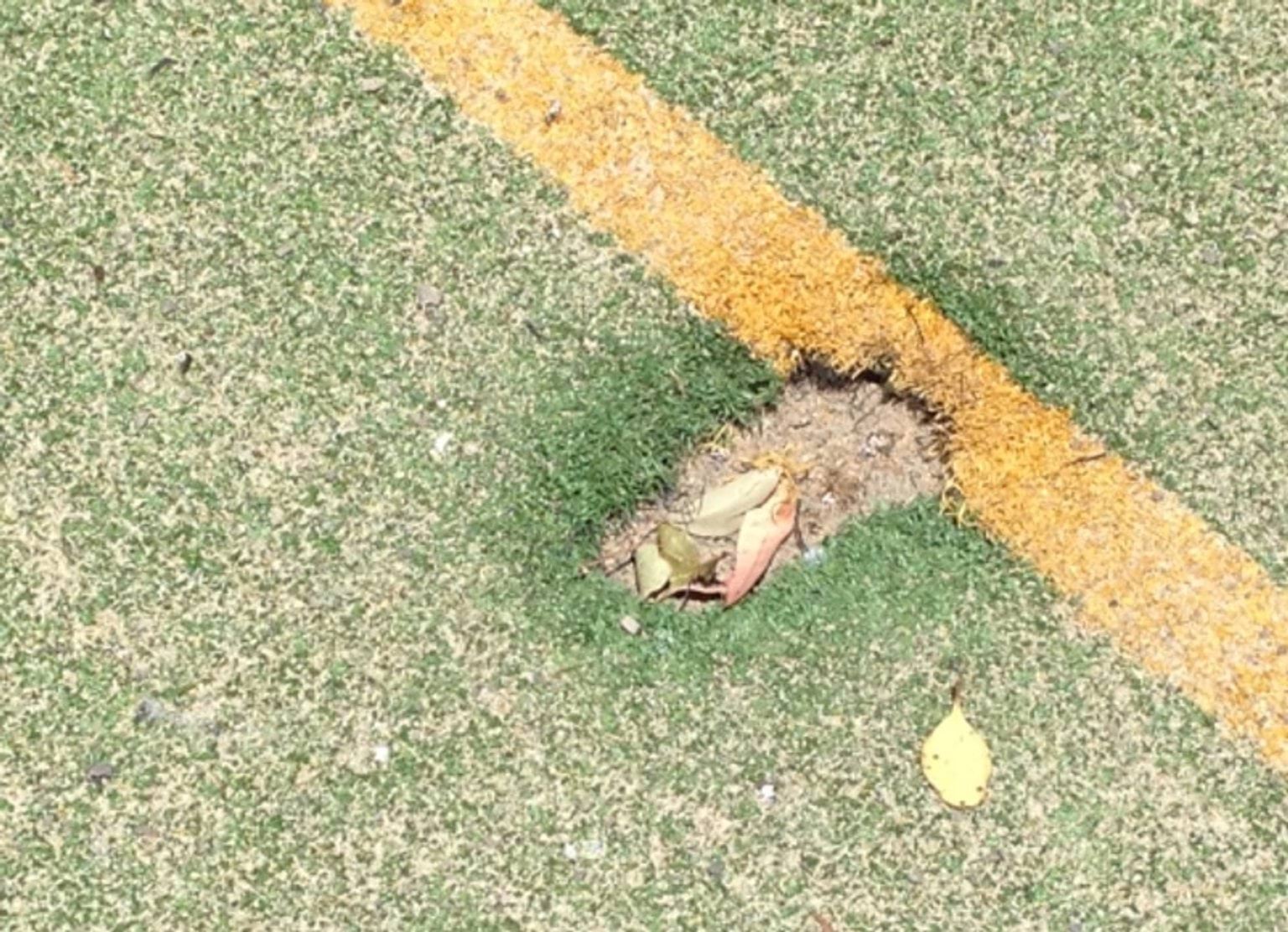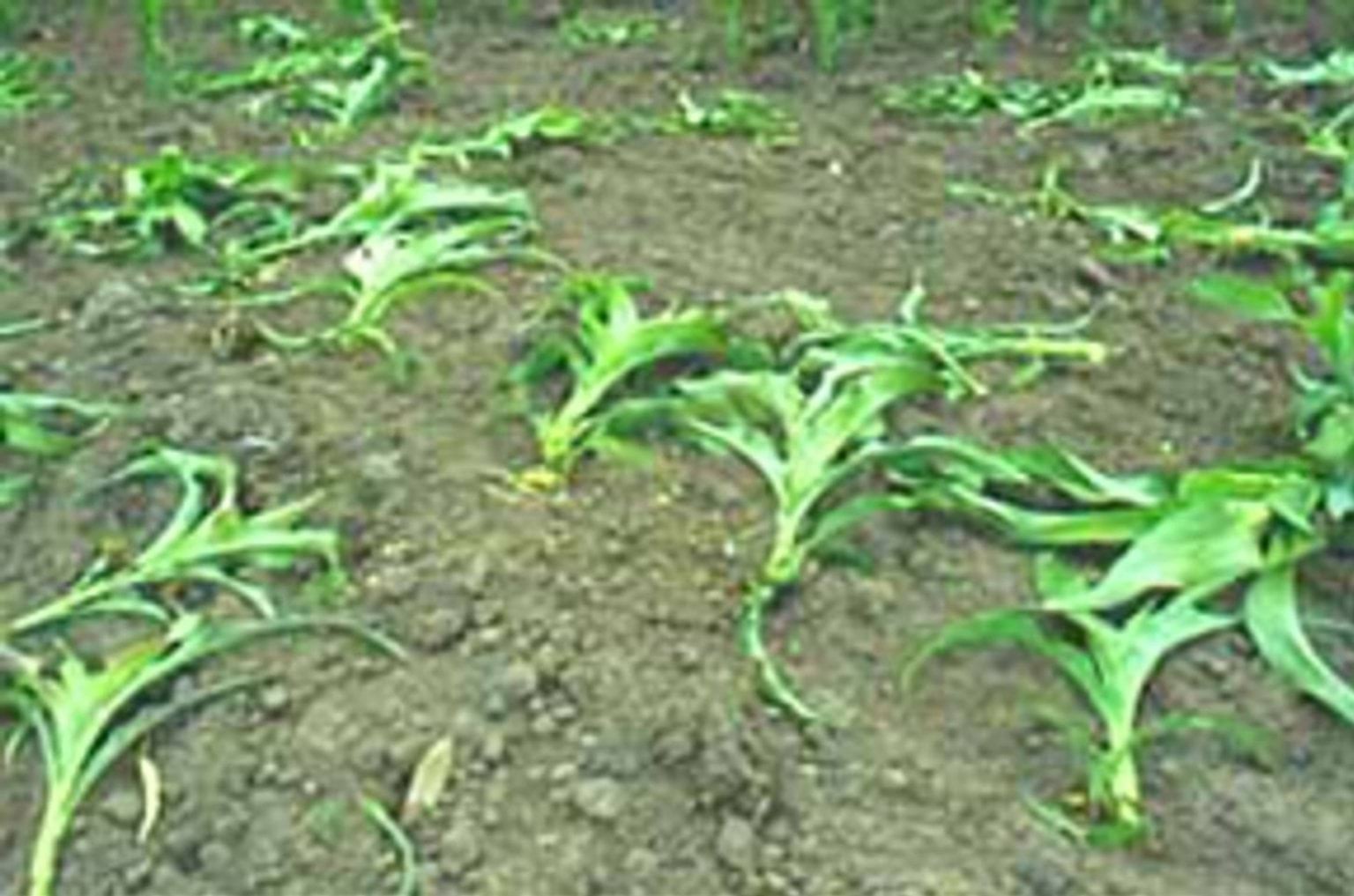- Published by:
- Conservation Regulator
- Date:
- 22 May 2024
Cockatoo, corella and galah damage is a significant problem for many Victorians, especially in regional and rural areas. Impacts are experienced across many different farming ventures, on community assets and private residences.
This guide provides information about ecological and behavioural traits of cockatoo species to explain why the birds can sometimes cause damage to property or agriculture. It sets out the legal and policy framework in place for the protection, conservation and management of these birds in Victoria.
This guide also provides practical tips and management methods applicable to different situations, to build people’s capacity to mitigate the impact that cockatoos can have on the built and natural environment.
Cockatoos, corellas and galahs, collectively referred to as “cockatoos”, are some of Australia’s most widely recognised native birds. In this guide, the term cockatoo is used to refer to the following three species, which exhibit similar behavioural traits.
Historical background
When large areas of Victoria were cleared for farming, cockatoo numbers, particularly the Long-billed Corella, were severely reduced due to loss of natural foods like Native Yam (Microseris scapigera). Exotic grain crops and introduced weeds like Onion Grass (Romulea rosea) replaced the Native Yam as their food. Cockatoos adjusted well to this change, but competition with rabbits kept their numbers low. With the introduction of myxomatosis in the 1950s cockatoos no longer competed with large numbers of rabbits for remnant grain left in stubble after the harvest each summer and as a result their numbers have increased. Long-billed Corellas have now recolonised their traditional range whilst Galahs are spreading further and further south.
Cockatoo behaviour
Understanding cockatoo ecology and behaviour is the first step in managing the problems they cause, and can help you to modify your property or processes to lessen negative impacts.
Cockatoo beaks constantly grow
Cockatoos need to chew items in their environment, including artificial structures, to maintain their beaks at the correct length and condition. Wherever cockatoos land, either feeding or beak maintenance occurs.
Cockatoos are sociable
Cockatoos flock and roost together. Flocks form through a process known as “local enhancement”. Birds in the air see birds feeding below and join them. This pattern continues until a large flock forms at a favourable food source. To avoid cockatoos flocking together, you can monitor crops regularly and act as soon as the first birds arrive to prevent a large flock forming.
Cockatoos are creatures of habit
Cockatoos use regular flight paths and return to good feeding areas repeatedly, so deter the birds early before regular feeding patterns develop. Cockatoos can be attracted to an area when someone feeds them. The feeding of wildlife is discouraged in all situations. If you are experiencing impacts because your neighbour feeds cockatoos, ask them to stop.
Cockatoos have favourite foods
Cockatoos have adapted well to feeding on commercial crops but they prefer Onion Grass corms. Some farmers have ploughed up an area of Onion Grass away from their crop to expose the corms and create a decoy during sowing. Cockatoos are also attracted to germinated cereal crops, such as wheat, oats and barley, and oilseed crops like sunflower and safflower. Monitor crops closely and be prepared for periods of peak cockatoo activity.
Cockatoo damage is seasonal
Cockatoos feed on different crops as they germinate and ripen, with most damage being caused to germinating crops in autumn. In cropping areas, plan your cockatoo management in the three to four months leading up to sowing and work with your neighbours or local Landcare group. Try to lessen cockatoos’ access to grain, by feeding grain to sheep at or after dusk and minimise grain residue in the stubble.
Cockatoos are scared of birds of prey
Birds of prey, such as Peregrine Falcons, Little Eagles and Wedgetail Eagles may feed on adult cockatoos, whilst newly-fledged birds are vulnerable to predation by Brown Falcons and Australian Goshawks. Consequently, cockatoos are wary of birds of prey and this fear may be exploited to scare cockatoos away using kites to simulate birds of prey.
Legal status
Wildlife Act 1975
Sulphur-crested Cockatoos, Long-billed Corellas, and Galahs are native wildlife and as such are protected under the Wildlife Act 1975. It is illegal to wilfully disturb or to destroy protected wildlife without approval.
Authority to Control Wildlife
The most common approval to scare, disperse or destroy protected wildlife is an Authority to Control Wildlife (ATCW). Landholders who are experiencing damage and wishing to scare, disperse or destroy cockatoos must apply to the Department of Energy, Environment and Climate Action (DEECA) for an ATCW.
It is DEECA policy that an ATCW applicant must try non-lethal control options, if available, before being able to apply for an ATCW for lethal control. Examples include putting chicken wire on wooden balustrades, installing rolling perches over fixtures, using scare guns or big eye balloons. The Management methods section of this guideline provides advice on management options available for cockatoos in various situations.
Where an ATCW for lethal control using a firearm is applied for, the applicant will most likely also require a populous place permit. The definition of a populous place includes, but is not limited to, residential areas, public open spaces and thoroughfares. Victoria Police is the responsible authority for issuing populous place permits and should be contacted for advice on when and how to apply.
Governor in Council Order
Notwithstanding that cockatoos are protected wildlife under the Wildlife Act 1975, Sulphur-crested Cockatoos, Long-billed Corellas, and Galahs have been declared “unprotected wildlife” by a Governor in Council Order (GiC Order) in certain situations in Victoria. Sulphur-crested Cockatoos, Long-billed Corellas, and Galahs are unprotected when they are causing serious damage to trees, vineyards, orchards, recreational reserves or commercial crops. In these situations, they may be shot by landowners, their employees and members of their families on the property where the damage is occurring. Committees of Management members are also permitted to shoot these species on recreational reserves where they are causing severe damage. This means that anyone specified in the GiC Order does not need an authorisation (such as an ATCW) from DEECA to shoot cockatoos when they are causing serious damage on their properties. Anyone not specified in the GiC Order, who seeks to control cockatoos must still apply to DEECA for an ATCW. The provisions of the Firearms Act 1996 and any other relevant legislation still apply. People should liaise with Victoria Police to make sure they obtain any required permits (e. g. populous place permit) or licences. In all situations not specified in the GiC Order cockatoos are fully protected and must not be shot or harmed in any way without authorisation from DEECA.
Illegal methods of control
Trap and gas
It should be noted that the GiC Order includes a condition which permits defined persons to take or destroy cockatoos using trapping and gassing equipment approved by DEECA. However, no such equipment is approved by DEECA. This option is thus effectively illegal.
Poisoning
Poisoning of cockatoos is illegal.
Birds of prey
Use of birds of prey to scare other birds is illegal in Victoria.
Managing impacts from cockatoos
Cockatoos are highly intelligent, so not all damage control measures will be effective in every situation or for sustained periods of time. However, there are greater chances of success if your control program:
- Is carefully planned
- Is based on an understanding of cockatoo behaviour
- Varies frequently and is persistent
- Reinforces scaring stimuli with some shooting
- Integrates a variety of different measures
Cockatoo damage management plans
Before you implement any cockatoo management actions, it is recommended that you develop a Cockatoo Damage Management Plan that is tailored to your location and likely nature of damage, based on past experience or local knowledge.
In most situations, this process will confirm that the level and frequency of damage requires damage mitigation. However, some may find that the costs of control exceed the benefits and that reducing or altering current efforts or doing nothing are more economic options.
Developing and implementing an effective damage mitigation plan involves four steps:
- Defining the nature and extent of the problem
- Developing a plan
- Implementing the plan
- Monitoring and evaluating the effectiveness of the actions
Define the problem
The first stage in developing a damage management plan is determining the nature and extent of damage. Before spending time or money on controlling birds, it is important to understand the problem, including when the damage occurs, where it occurs and how much money the birds are costing you.
It is also important to establish with certainty that it is actually cockatoos who are the cause of the problem. Sometimes cockatoos may be sighted in or near a damaged area, but they are not actually the cause.
All this information is critical to determining the most appropriate management measures and when and how they should be implemented. It also provides a benchmark to determine the effectiveness of mitigation measures.
Develop a plan
Once the problem is defined and the nature and extent of damage are understood, document the objectives of your management plan and the way you will track progress towards achieving your aims. For example, you may wish to set an objective of reducing damage losses by half and to measure this through a reduction in fruit loss or control costs, or through increased fruit quality.
After your objectives are set, and you have worked out how you will measure the success of your controls, you can then select the best damage reduction options. The Management methods section below, and the Summary of actions to reduce damage in various situations at the end of this guide show some of the techniques that are available. Wherever possible, it is best to deploy a range of actions when the crop is vulnerable to bird damage.
Implement the plan
When your plan is complete, prepare a timetable for action and begin implementation. Coordinating your plan with your neighbours may also be necessary to maximise the effectiveness of the program.
Monitor and evaluate the results
It is important that you measure the results of your control program to reduce the guesswork in determining the effectiveness of your actions.
Monitoring is usually undertaken on two levels: operational monitoring and performance monitoring. Operational monitoring aims to evaluate the efficiency of the control program through an assessment of all relevant equipment, transport and operational costs.
Importantly, operational monitoring should include an assessment of labour costs, including the cost of time that you and any others (e.g. staff) spend implementing the control actions. Some control strategies are cheap in terms of equipment and materials, but very labour-intensive. It may be more cost-effective to select a technique with high up-front costs but minimal ongoing labour costs, like permanent netting.
Performance monitoring aims to determine how well your management plan performs. This is usually a measure of damage levels or lost production. Measured reductions in damage that occur as a result of bird control allow the benefits of the control activity to be quantified.
The final step is to evaluate your operational and performance monitoring data. Refinements and changes to the control program both within and between seasons can then be made using the knowledge gained.
Management methods
When planning your approach, it is important to choose the appropriate method, or combination of methods to maximise your chance of successfully deterring cockatoos. Before describing various methods that have been utilised in different situations with differing degrees of success, the following section outlines the role of bird destruction in a cockatoo deterrence campaign and DEECA's policy approach to lethal versus non-lethal control.
The role of bird destruction
As noted earlier, cockatoos are unprotected wildlife in certain situations allowing anyone specified in the GiC Order to shoot these birds on the property where the damage is occurring.
Shooting is a common technique used to control cockatoos, and may result in a short-term behaviour change. However, this can often be achieved at less expense by using non-lethal means, such as using decoy food, scaring, or making visual barriers. Several things need to be considered before shooting cockatoos:
- Shooting is usually only a short-term measure, and is unlikely to have much impact on the overall population size or its ability to recover to former numbers
- Unless shooting is carried out over a large area, new birds will quickly move in to replace those that have been shot or scared away
- Shooting may increase the extent of damage if birds are constantly moved around
- Shooting may cause friction with neighbours, especially if shooting is to occur in built-up areas (it also requires a populous place permit from Victoria Police)
For all those reasons DEECA does not recommend shooting cockatoos as the sole solution to a cockatoo problem. Rather, shooting a small number of birds should be one of several methods incorporated into a carefully designed and implemented cockatoo management plan, so that cockatoos learn to relate the noise, and other elements of the campaign, with real danger.
Management methods for various settings
Cockatoos impact lives and property at various scales, and methods that are appropriate in some scenarios are ineffective or unaffordable in others. The following sections provide tips on how to manage cockatoos in a variety of settings.
Due to the intelligence of cockatoos, it is important to monitor the effectiveness of approaches and, if necessary, adapt methodologies.
Summary of actions to reduce damage in various situations at the end of this guide provides a summary of damage reduction actions, for quick reference.
Damage around the house
Light fixtures, powerlines and other fixtures
In some situations, bird damage to light fixtures, powerlines and other fixtures can be avoided through their design and placement. Even existing fittings can be altered to provide better protection.
Fine wires are difficult for birds to perch on, so using them above a roosting structure can be an effective deterrent. In some scenarios using polyethylene pipe “rolling perches” provides the best protection.
Light fittings can be protected by building perches above them or by enclosing the existing perches with 5cm lengths of polyethylene pipe. When the birds land, the pipe sections roll under their feet so they are unable to balance. For the rolling perches to be effective, they should be the only perch sites on the fixture and should prevent birds from perching on the fixture itself. Commercially produced ‘spike clusters’ are also available to prevent perching.
Polyethylene pipe can also be used to prevent perching on the cross-sections of aerials. Sheathing communications cables in PVC or metal conduit reduces bird perching and damage.
Loose roof nails should be replaced with roofing screws, because cockatoos are attracted to loose nails and roofing screws remain firm.
Damage to fixtures can also be reduced by removing nearby food sources that are attracting the birds, or by scaring them from their roost sites and moving them on to other areas.
Cockatoo damage to power lines can be avoided by putting the lines underground.
Timber fittings and outdoor furniture
Damage to timber fittings and outdoor furniture often occurs when someone is providing food for the birds and attracting them to the area. To avoid this problem, try to find out who is feeding the birds and explain that the birds are causing the problem because they are being fed, and ask them to stop.
Timber can be protected with metal sheathing or by hanging netting or shade cloth from the eaves on rollers. You can roll the shade cloth up and out of the way when you are home. Electric shock perches can provide another way to protect timber fittings.
When replacing western red cedar window frames and door frames, use hardwood or metal and consider excluding birds with permanent protective screens or netting.
Another option is to start a scaring strategy using recorded alarm calls and loud noises. However, this can be difficult in built-up areas where you may also disturb neighbours. Cockatoo damage to outdoor furniture
Damage to newly planted tree seedlings
Visual screens can be used to reduce cockatoo damage to tree seedlings, such as uprooting or snipping off seedlings. One way to create a visual screen is to plant or leave strips of vegetation such as long grass on either side of the lines of tree seedlings and across them at intervals.
The screens should be 0.6 to 1.0 metre high before the tree seedlings are planted. For small area plantings, fences of hessian or shade cloth can be used and the effect of these screens can be enhanced by some patrolling combined with shooting if necessary. Effective weed control is important when using this system.
Direct seeding and natural regeneration are other ways of reducing cockatoo damage, as individual plants germinate at different times thus making the food source less obvious to the birds.
Damage to horticultural crops, fruits, nuts, grapes and flowers
The scale of many horticultural crops, such as fruits, vines or nuts or commercial flower farm lends itself to the only proven long-term solution to bird damage: exclusion netting.
Netting is the most effective means of reducing damage and improving the quality and yield of fruit crops in areas where damage occurs. Netting also help to protect fruit from wind and hail.
However, netting can be expensive to erect and maintain and unlikely to be an economic solution for low value crops or those that sustain a low level of bird damage. Netting may also be impractical in some situations, such as in difficult terrain or where large trees hinder the erection of netting structures.
Where netting is not a viable option, a strategic integrated approach (like a scare campaign, outlined below) is recommended.
Damage to roost trees through excessive pruning and noisy roosting behaviour
Cockatoos roosting in trees can sometimes cause damage to the trees as the birds prune sections to maintain beak condition. Disturbance through noise can also occur as a flock settles in to roost, or in the morning as birds call to each other from first light.
Deterring birds from roosting in certain trees requires an integrated scare campaign ideally started as flocks begin roosting in summer, to prevent establishment of large flocks at a site. During the planning stage for the campaign all permits must be obtained. That is, an ATCW from DEECA and a Populous Place Permit (for shooting) from Victoria Police.
It is also crucial to engage with neighbours to ensure there is consensus that action is needed and that people are fully aware of the disturbance that will be caused throughout the scaring programme, which may need to be sustained for several weeks.
The intent of the scare campaign is to unsettle the birds to the degree that they will abandon the roost site. Initially there should be some shooting to kill a small number of birds. The shooting should be done at various times, from different sites, and by dissimilar people. This should be immediately followed by scaring measures, so that birds associate humans with real danger. Deployment of Bird Frite® cartridges, which are pyrotechnic ‘crackers’ fired from a 12-gauge shotgun, recorded alarm calls, flashlights and big-eye balloons should be constantly varied to keep birds on edge and to deter them from returning to the tree for roosting after the scare campaign ends each day.
It’s important to keep in mind that even though tree pruning by cockatoos can appear obvious and major initially, it does not always result in long-term damage.
Cockatoos are known for damaging trees, but other factors can also contribute to the damage including defoliating and sap-sucking insects, raised nitrogen content of soils, especially where stock camp under trees and altered soil hydrology through soil compaction. Rising water tables, fungal attack and damage to roots by hoofed stock or machinery can also damage a tree.
Damage to sporting grounds, bowling greens and golf courses
Cockatoos can sometimes cause damage to sporting grounds such as bowling greens and golf courses.
Try to work out why the birds are being attracted to the area and whether it is possible to reduce the attraction. If the birds are roosting nearby, a scaring program will reduce the attractiveness of the roost site and encourage them to move on.
For relatively small sites, such as bowling greens, removable vertical screens of shade cloth or hessian 2.0 to 2.5 metres high can be used when the greens are not in use.
If the birds are attracted to Onion Grass, try to remove the grass from the site with herbicides. Bird hides can be used to reduce damage to golf courses, where birds are shot at from the hides with both live ammunition and Bird Frite® cartridges, combined with playing recorded alarm calls. The hides should be moved frequently.
All permits (an ATCW from DEECA and a populous place permit from Victoria Police) must be obtained prior to shooting cockatoos on golf courses.
Damage to feedlots
Cockatoos can sometime cause damage to feedlots due to feeding behaviour and fouling. Cockatoos like to have a clear view around them when feeding. Corellas feeding on grain Placing hoods over feed troughs, or erecting shade cloth screens on three sides and above the troughs may reduce cockatoo feeding. The localised destruction of birds may also be necessary. Farmers should be aware that cockatoos are also attracted to feedlots to eat undigested grain from cattle droppings. Young cockatoos that have just left the nest use this grain as a food source at a time when little else is available. The grain in cattle droppings actually helps enhance the survival rates of cockatoos and assists in increasing their numbers.
Damage to feed trails and stubble
Feed trails and stubble often attract cockatoos, who can poach feed intended for livestock or prevent lambs from feeding. Limiting cockatoo access to grain at this time is very important. Having grain easily available just after young cockatoos leave the nest increases their chances of surviving and maturing. Without access to grain fewer young birds will survive leading to a decrease in the overall cockatoo population. Feed trails for stock should be placed late in the day when cockatoos are returning to their roosts and stock can then feed through the night undisturbed. Feed out just enough grain so there is little left the next morning. Feed smaller amounts more frequently, or keep birds away until stock has finished feeding. Wastage can be reduced by placing feed in bird-proof troughs. Set harvesting machines to minimise the amount of grain left in stubble after harvest and collect chaff and grain for stock feed.
Damage to hay and straw bales
Cockatoos cause damage to hay and straw bales by feeding on the seed heads within them. You can reduce damage to the outermost bales on the open side of the stack by placing shade cloth or hessian on three sides of haystacks. Removable panels can be used, so that access to other sides of the stack is still possible. If damage is severe, all four sides of the stack can be covered. Damage to round bales in paddocks can be reduced by erecting temporary walls. Walls made of shade cloth or hessian should encircle the bales at 2.0 to 2.5 metre high. Shade cloth lasts longer than hessian and can be reused in later seasons.
Damage to silage and grain covers
Cockatoos can perforate grain covers on silage pits, which lets in air and reduces silage quality. As with the hay bale walls, silage covers can be protected by erecting shade cloth or hessian walls at 2.0 to 2.5 metre high around them. Shade cloth lasts longer than hessian and can be reused in later seasons. Damage to grain covers generally occurs when birds are attracted to spilt grain on, or around the covers. When care is taken to reduce grain spillage, or to remove spills immediately, grain cover damage is much less likely. If damage continues, visual screens of shade cloth or other material can be used. A combined scaring and shooting strategy, using bird hides, Bird Frite® cartridges (pyrotechnic ‘crackers’ fired from a 12-gauge shotgun), recorded alarm calls and gas guns may also be effective, and may enhance the effect of the visual barriers.
Damage to ripening crops or around trees, dams and bare or thin patches within the crop
Cockatoos sometimes attack the outer edges of a ripening crop, or around trees, dams and bare or thin patches within the crop.
Reducing the crop edges can reduce the number of sites from which cockatoos can attack it. It is also important to discourage the development of ‘feeding patterns’ at the crop site. The first few birds on the crop are the most important ones to deter because their presence will attract other birds.
A crop protection program should be carefully planned and, at the outset, the land owner should check if any permits are required. That is, an ATCW from DEECA and a populous place permit from Victoria Police
The on-the-ground program should start with shooting as this establishes the link between loud noise and danger. Shoot from several hides near the birds’ main approach routes. Bird hides can be made of hessian or other material. Vehicles can also be used as mobile hides and left near the crop.
Shoot from these ‘approach route’ hides, but switch to other hides regularly.
Scarecrows can also be used, dressed in bright colours. Remember to move the scarecrows regularly.
Scare guns can be introduced at this stage. Set the guns to operate at long intervals, and only when birds are likely to be feeding in the crop, usually early and late in the day. Move the scare guns every two to three days. They may be more effective if hidden – use the bird hides and keep scare guns out of sight when not in use.
Reinforce the scaring with some shooting, and with the use of Bird Frite® cartridges. While the approach outlined above may sound unusual, it has been shown to be effective.
Farmers should also consider providing an alternative, low-cost food source such as rice hulls as a decoy and to enhance the scaring strategy. Decoy food should be at least 500 metres away from the crop so that scaring activities do not disturb the birds at the decoy site. No control should be undertaken near the decoy, no matter how tempting this is.
Decoy sites are more effective when they are close to the birds’ flight path and close to trees that can be used as perches or roost sites.
Decoy model cockatoos in the feeding posture can be used to lure birds to the decoy feed site.
Services and equipment
A range of services and equipment can be used during your cockatoo management programs. Following is a list of where they can be sourced.
Gas guns
Rural hardware or farm machinery outlets
Bird Frite cartridges
Ask your local ammunition dealer
Bird of prey kites
Search for kite bird scarer on the internet
Eye-spot balloons
Look for scare-eyes on the internet
Electric shock perches
Bird-shock Flex Track can be installed by some licensed pest controllers who specialise in birds. Search for Bird Ban Shock Tape, Bird Jolt, or Bird Shock Flex Track on the internet.
Netting
DEECA recommends the use of wildlife-safe netting and has prepared a fact sheet with useful information.
Wildlife-safe netting factsheet
Recorded alarm calls
Alarm calls of Sulphur-crested Cockatoos and Long-billed Corellas can be downloaded from the internet.
Summary of actions to reduce damage in various situations
Strategic approaches
- Develop a Bird Damage Management Plan
- Co-operate with your neighbours and the local Landcare group
- Work with neighbours to monitor bird numbers and location of birds
- Plant as many paddocks as possible at the same time and reduce crop edges to reduce the number of sites for cockatoos to attack from
- Where practical, sow at the same time as your neighbours
- Ask your neighbour to not feed cockatoos
Exclusion methods
- Erect nets to protect your horticultural crops, or to manage damage at smaller scales (sports grounds)
- Use chicken wire to protect furniture, wooden window frames
- Install rolling perches, spike clusters, electric shock perches or wiring to prevent birds from perching on fixtures
- Place cables underground
- Use retractable shade-cloth to protect wooden surfaces or windows during your absence
- Cover timber surface with metal sheathing
Building alteration or maintenance
- As structures age and need replacing, consider installing metal framed windows instead of more vulnerable wooden frames
- Replace roofing nails with screws, which can’t be pulled out by cockatoos
- When replacing western red cedar window or door frames, use hardwood or metal finishes
Good crop management
- Sow crops at the recommended rate
- Thoroughly cover all grain, avoid and clean up spillage
- Minimise residual grain in the stubble
- Direct drill to avoid exposing onion grass corms
- Feed sheep away from paddocks to be cropped
- Protect silage or hay bales by placing shade cloth or hessian on three sides of storage structures (haystacks)
Scaring
Kites, scarecrows, hides, vehicles, and shooting.
- Design, and then implement, a scare campaign
- Combine several methods of scaring
- Scaring must be unpredictable and remember to shift scarers often to unsettle the birds
- Kites that simulate birds of prey, such as eagles and peregrine falcons, may work on small paddocks
- Scare early in the season and early in the day
- Monitor bird activity regularly and scare as soon as the first birds arrive to prevent a large flock from forming
- Reinforce scaring with the use of a registered firearm
- Try broadcasting cockatoo alarm calls
Decoy feeding
- Place decoy feed as far away as possible from crop
- Use ‘seconds’ seed, or plough onion grass to expose corms
- Continue scaring at crop
- Extra food will not increase population numbers, it only diverts existing birds from the crop. Food is abundant during cropping time in autumn
Further information
- Visit wildlife.vic.gov.au(opens in a new window)
- Visit Authority to Control Wildlife (ATCW) application
- Phone 136 186 8am – 6pm, Monday – Friday
- Email customer.service@deeca.vic.gov.au
- Contact your local DEECA regional office(opens in a new window)
